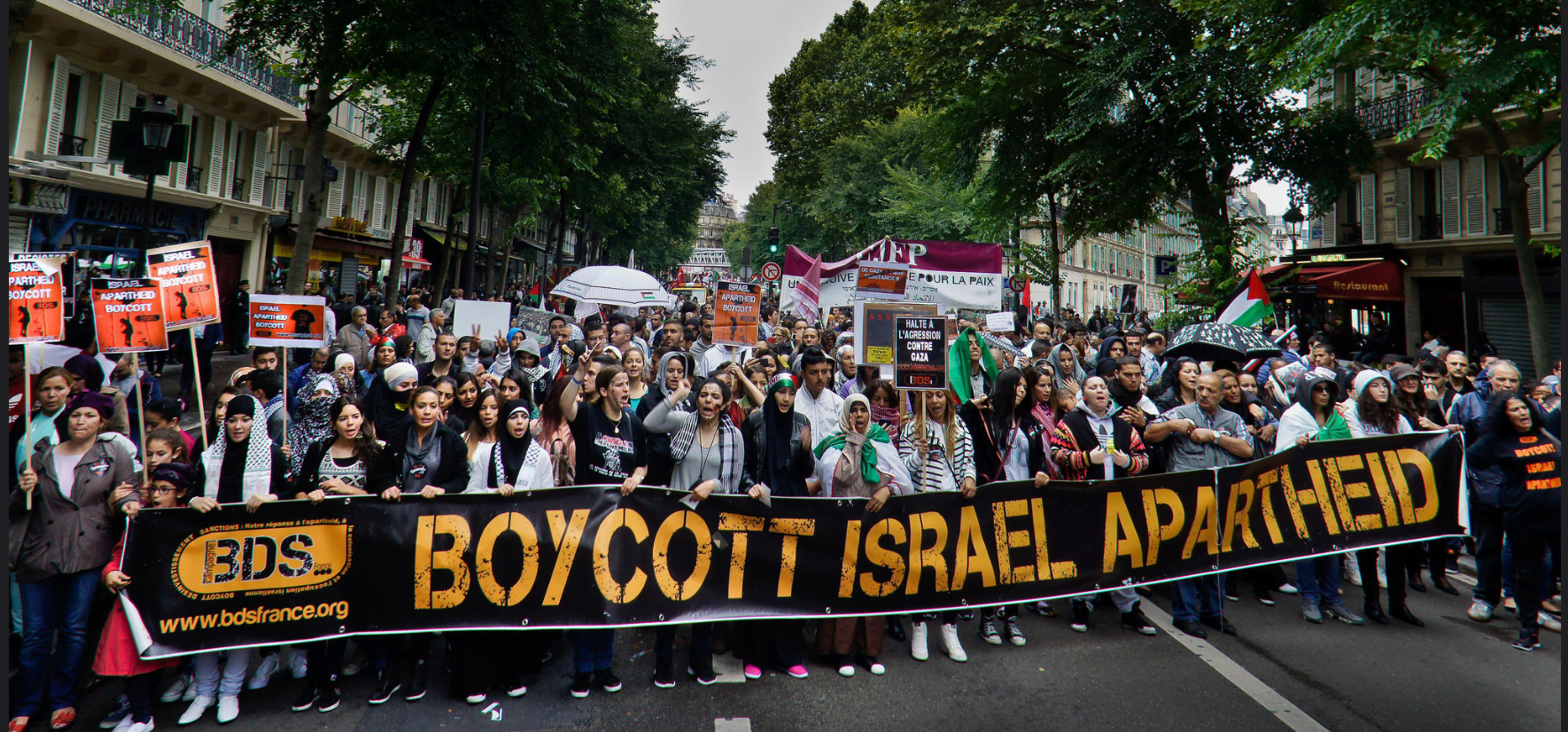What is so irrational about the songs that are played by right-wing mobs in front of mosques? A chant turning into a haunt for many is a phenomenon that is raving in India. What makes the sounds so important in our lives? Why is the obviousness of hate songs written for Rhea Chakroborty after Sushant Singh Rajput’s death by suicide considered to be normal?
Sounds are essential in human life. They help us in imagining a world. From morning prayers in schools to the sounds of worshipping practices in the nearby religious places, we are exposed to various sounds throughout our childhood. These sounds shape our relations with the world. They teach us various actions in everyday life, like how to differentiate between a command of a teacher to an order of a policeperson.
We learn how to submit to a sound and how to create identities around it as well. The sounds go way deeper than this, where a singular sound might possess the capacities of multiple outcomes. The sound of the national anthem in a film theatre might invoke patriotism in some, but it might make others avoid that space for fifty-two seconds.
Also read: Hindutva Mobilisation Of Women —A Serious Concern For Women’s Movement

A sound can also be a command to incite violence in such cases where refusal to follow a ritual around the playing of that sound. A chant of ‘Jai Shree Ram’, might lead to a violent end. This article explores various other possibilities through which the question of sound is inflecting law in India. It takes four ideas that are sound in the form of transgression, technology, weaponry, and exclusion and attempts to understand their interaction with the Indian law through various examples. The article also looks at the caste, class, and gendered intersection of law and sound to shed a brighter light on the issues.
These sounds shape our relations with the world. They teach us various actions in everyday life, like how to differentiate between a command of a teacheR.
James Parker, in his work talks about understanding the acoustic jurisprudence “how law is lived, both in sound and by virtue of it.” It also addresses the ways in which legal practices ignored, and attends to various questions around sounds like the relations between speech, authority, jurisdiction, and reason as the obvious questions. The lesser familiar juridical question would comprise the question of music, song, voice, and affect.
There is also a third dimension enhancing both of them, which is the question of technology. It keeps introducing new concepts and questions into acoustic jurisprudence.
Also read: Call For Genocide Against Muslims, Police Apathy—Sanctioned By The Centre’s Extremism
.jpg)
One of the most obvious ways to look at the sound as transgression in recent times is the recent wave of hate songs laced with dance beats playing on loudspeakers across North India during religious festivals, like Ram Navami and Navratris. Many of these songs contain abusive speeches towards a minority group. In the lyrical design, these songs show patriotism by singing against Pakistan as an enemy state and Muslims as a threat to the Hindu majority. Both of these invoke an extreme level of hatred and call for violence against these communities. It is not very different from what Simon Bikindi has been singing against the Tutsi community in Rwanda.
We learn how to submit to a sound and how to create identities around it as well. The sounds go way deeper than this, where a singular sound might possess the capacities of multiple outcomes.
The soundtrack of hate in India is not just limited to these particular events, which happen on a few days in the year, but they can be found in the everyday. As per a report by The Print, in Raipur, many of these hate songs are put on full volumes in front of mosques every Sunday. It becomes the norm, thus taking the sound of hate and violence into the everyday. People behind these songs enjoy complete impunity as the people in the regime support them. In July 2019, one among such people, Varun Bahar, who sang “Jo na bole Jai Shri ram, unko bhejo kabristan” (Those who will not chant hail lord ram, should be sent to the cemetery), was arrested amid backlash.
The impact of bombing, torture, and violence often leads to long-term impacts such as post-traumatic stress disorder (PTSD). In conflict areas like Kashmir, it has become commonplace, and people are suffering from these mental illnesses due to the extreme torture they endure at the hands of the Indian state. Many of the survivors of torture have reported getting panic attacks with certain sounds. The sound of torture then scars one person, taking them longer to heal, if they can at all.
The hate sound against the minority community is also seen turning personal when many Bhojpuri artists end up writing and producing music abusing Rhea Chakraborty. They were part of the larger socio-moral mob who decided that Rhea was responsible for her partner’s death by suicide, along with TV news channels screaming that she was a drug dealer and a killer. The idea of a “witch woman” hexing the small-town sweet boy trope was quite visible in these songs and reporting.

Another example of sound leaving a mark of hatred in every day is of Kanwar Yatris. Every year many people, called as Kanwari, take a long walk from various corners of North India to Haridwar to get water from the holy Ganga. During this pilgrimage walk, it is a common scene to see them with ear-bursting speakers playing loud songs of patriotism. A kind of music that cannot be challenged in current times. These people under the banner of religion and patriotism, function with complete impunity. They rarely see any legal action against themselves if they cause any violence. For them, the sound is a cover to gain immunity from the state for keeping any kind of conduct free of consequences.
A sound can also be a command to incite violence in such cases where refusal to follow a ritual around the playing of that sound. A chant of ‘Jai Shree Ram’, might lead to a violent end. This article explores various other possibilities through which the question of sound is inflecting law in India.
The usual people working behind the unusual acoustic hate perhaps are the opportunists trying to get some benefits of the new wave of hate. Some who write and produce these hate songs see the incitement of violence yet support and stand by their work. It is a financial source for them as many of these people do not get more than five to eight hundred rupees per song. The recurring question which keeps coming into the mind ís who are these people making this music sound innocent? What kind of innocence are they carrying which disallows them to see the consequences of such music? A few of these people who make this hate music are themselves from the minority community, i.e., Muslims. It can be said that it will not matter whether they, as Muslims, stop making such music or not, as the business will keep going on. If they do not make this hate music, then someone else will, for sure. Such discourse does not take us away from the questions of accountability. Is there more weightage towards Muslims making this music as it is against their own people, or towards Hindus as a majority group attempting to suppress the minority from all fronts?
The acoustic testimonial usage of sound in the legal system is another question that comes into the frame when talking about the act of witnessing. For example, the usage of sound in various technological advancements is also a kind of expansion of acoustic jurisprudence in the Indian legal system. Many minors who are victims of sexual violence give their testimonies through video conferencing. Under article 24 of the POCSO Act – 2012, it is provided that a child who has suffered sexual violence will be giving out their statement through audio-video recording. In the trial of Eichmann, the sound through various microphones was also translated into many languages to make listening an intimate act done in the collective.
The translation of audio evidence as testimonies is one way one can imagine such engagement of Indian law with the sounds. What would happen if such an act of testimony and witnessing the act turn acoustic and does not make things clearer but have the capacity to invite outrage. In the Jawaharlal University, Delhi case, it was alleged that anti-India slogans were raised, leading to chaos. Later it turned out that those audio-video clips were doctored. The question remains, how will the judicial system of India take this challenge?
Sound has a psychological impact, and one can easily imagine it being used against the people of the state who will fall under the category of troubled citizens. The impact of bombing, torture, and violence often leads to long-term impacts such as post-traumatic stress disorder (PTSD). In conflict areas like Kashmir, it has become commonplace, and people are suffering from these mental illnesses due to the extreme torture they endure at the hands of the Indian state. Many of the survivors of torture have reported getting panic attacks with certain sounds. The sound of torture then scars one person, taking them longer to heal, if they can at all.
The soundscape in Indian legal jurisprudence has various possibilities, as mentioned across readings. Those possibilities are endless through which one can imagine a legal sense of acoustic jurisprudence. The environment of hate and violence has been normalized through the usage of these sounds, which is creating a larger legal challenge against the Indian judiciary. We have not yet explored this, and it has been until recently that we have started to notice the tip of this iceberg.
Jitender (they/them) is non-binary and a socio-legal researcher based out of Delhi. They have previously worked with organizations like All India Women’s Conference, Beyond Eye, The YP Foundation, and Hidden Pockets on a variety of issues like climate change & gender, development justice, sexual and reproductive health, and human rights. Currently, they are working with Nazariya — a queer feminist resource group. Through their work, they have been advocating for equal and equitable spaces for queer and trans persons in every aspect of social life. They love reading and exploring the law in the everydayness of human lives. They can be found on Instagram and Twitter.





Hate can be seen in every home, with mothers-in-law treating their daughters-in-law like their property. She must have good social skills, she must dress well, she must wake up early, etc. To show the world they need an educated and modern bahu, but in the house she must be submissive and obedient. This affects sons too because no man wants his mother controlling his wife. Many times the bride’s mother wants to control her son-in-law and treat him like a dog. Can we have some articles telling mothers-in-law to stay within their limits and know their boundaries?